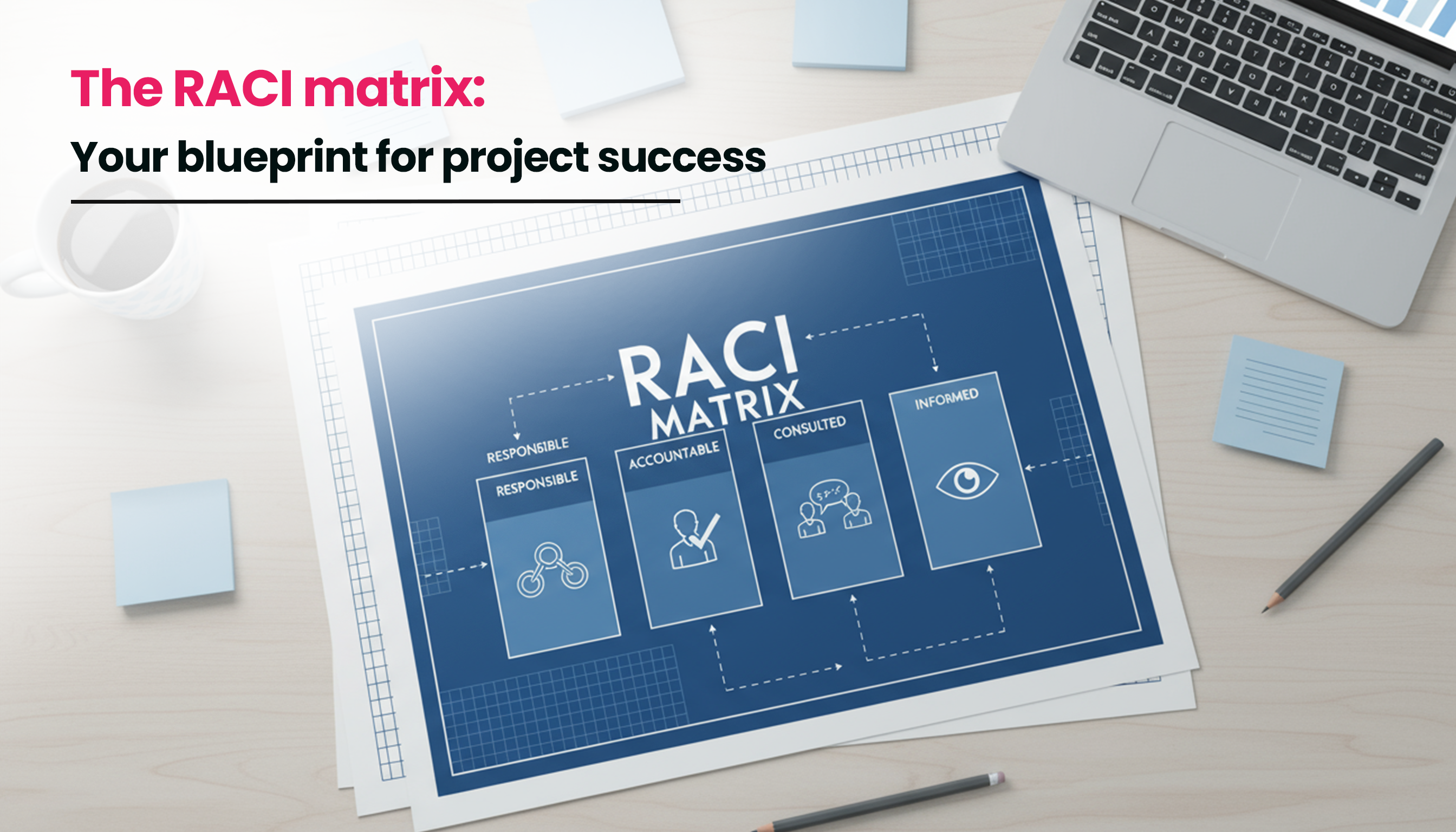Every successful project has one thing in common which is clarity. When everyone knows exactly what’s expected of them, deadlines are met, decisions are made efficiently, and chaos is kept at bay. But when responsibilities blur and communication breaks down, even the best project plan can fall apart. That’s where the RACI matrix comes in, a simple yet powerful framework that helps teams define roles and responsibilities with crystal-clear precision. Whether you’re managing a complex IT project or leading a cross-functional business initiative, understanding RACI can be the difference between success and endless confusion.
What Is a RACI Matrix?
The RACI matrix is a project management tool that maps out who is Responsible, Accountable, Consulted and Informed for every task, milestone, or decision in a project. It ensures everyone knows their role, helping to prevent overlaps, finger-pointing, or dropped balls.
- Responsible (R): The people who do the work.
- Accountable (A): The one person who owns the task and signs off on its completion.
- Consulted (C): Those who give input and provide expertise before a decision is made.
- Informed (I): Team members who are kept in the loop about progress or outcomes.
The key rule? Every task can have several people Responsible, but only one person can be Accountable.
Why the RACI Matrix Matters
In nearly every struggling project, you’ll find confusion around roles: too many decision-makers, not enough accountability, or unclear ownership of deliverables. The RACI matrix eliminates that by providing a visual blueprint of who’s doing what, ensuring nothing slips through the cracks.
Integrating RACI into your Project Life Cycle (PLC) also creates consistency. It allows your team to align from the start, avoid duplication of effort, and identify bottlenecks early.
How to Create a RACI Matrix in 6 Simple Steps
You don’t need advanced software or hours of setup to build a RACI chart. Just follow these steps:
- List all project tasks – Break down your project into detailed deliverables or milestones.
- List all stakeholders – include everyone involved, such as executives, project managers, analysts, developers, and more.
- Assign roles – Mark who is Responsible, Accountable, Consulted, and Informed for each task.
- Ensure every task has one Accountable owner – This keeps authority clear and prevents disputes.
- Check for balance – Make sure no one is overloaded or left out.
- Validate with your team – Review, discuss, and finalize the chart before the project kicks off.

Example of a RACI in Action
Imagine you’re leading a software development project with five key roles: a project executive, manager, business analyst, technical architect, and developers.
- The project manager is both responsible and accountable for initial scoping.
- The business analyst is responsible for mapping workflows and ensuring alignment.
- The technical architect and developers are informed during early planning but take responsibility later when implementing and testing.
- The executive sponsor signs off on each stage, providing accountability.
- This kind of mapping eliminates ambiguity, making collaboration seamless.
RACI vs. RASCI: What’s the Difference?
Sometimes you’ll see an extra “S” added to the acronym, making it RASCI. The “S” stands for Supportive, representing team members who provide assistance, resources, or expertise to those doing the work.
While RACI focuses on direct accountability, RASCI can be helpful for larger organizations where supporting roles need recognition and coordination.
Best Practices for Using the RACI Matrix
Creating a RACI chart isn’t a one-time exercise. To make it truly effective, follow these best practices:
- Keep it simple. Don’t overcomplicate it. Clarity beats detail overload.
- Review regularly. As projects evolve, roles can shift. Revisit your matrix periodically.
- Avoid overlap. Multiple “Accountables” cause confusion; one is enough.
- Balance responsibilities. Watch for anyone with too many “R”s; it might signal workload issues.
- Get team buy-in. Everyone should agree on their roles and feel ownership.
- When done right, the RACI matrix doesn’t just prevent confusion, it builds trust, accountability, and smoother workflows across teams.
The Bottom Line
The RACI matrix isn’t just another management buzzword; it’s a practical framework that transforms how teams collaborate and execute. By clearly defining who’s responsible, who’s accountable, and who needs to be consulted or informed, you set the foundation for effective communication, faster decisions, and project success.
If you’re tired of missed deadlines and unclear ownership, it’s time to make RACI part of your project toolkit and start seeing the difference clarity can make.




